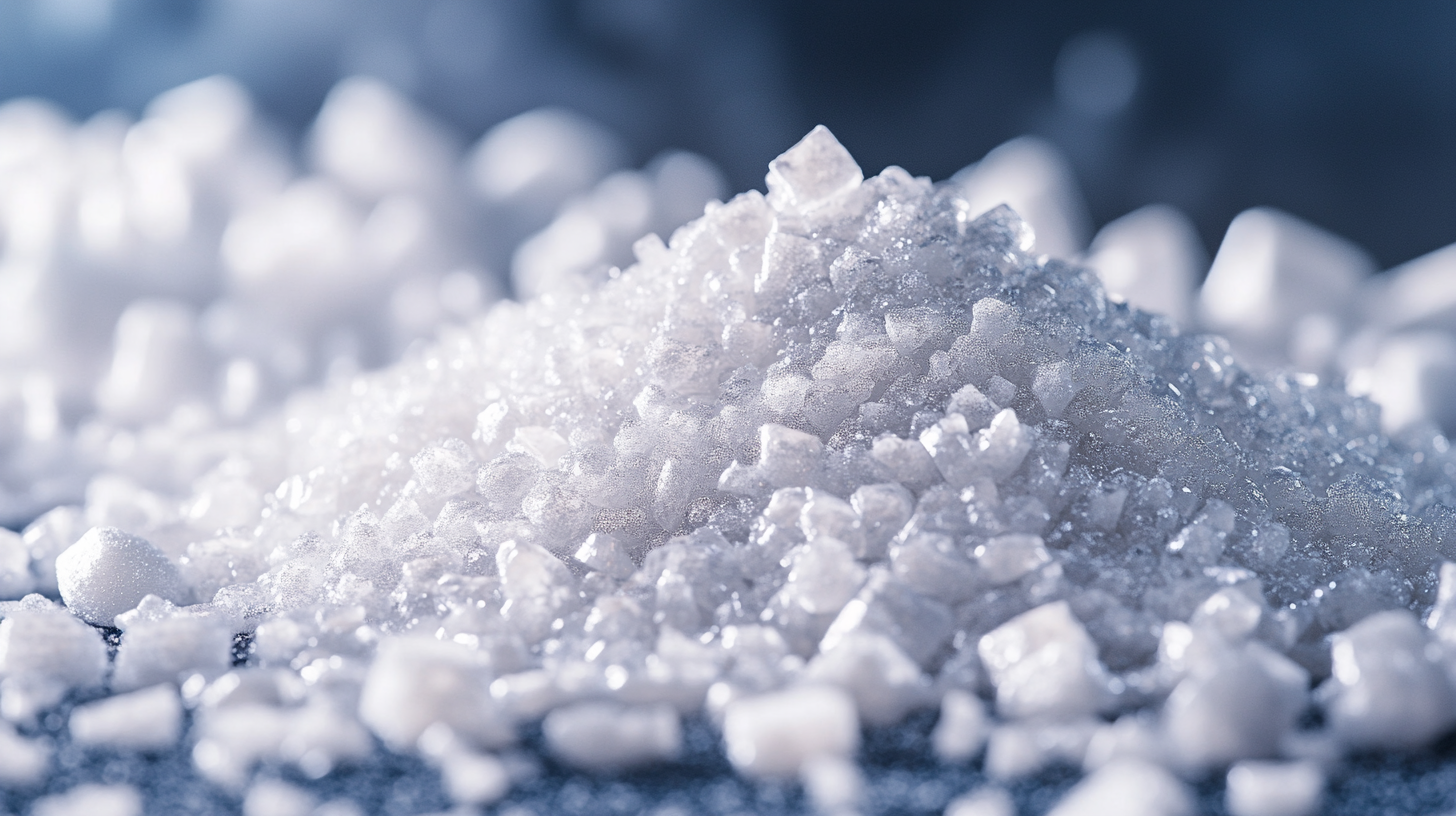As industries continue to evolve, the demand for advanced materials like Alumina Granules is poised to reshape manufacturing processes across various sectors. According to a recent report by MarketsandMarkets, the global alumina market is expected to reach a value of approximately $30 billion by 2025, driven by innovations in material science and sustainable practices. Alumina Granules, known for their exceptional durability and thermal properties, play a significant role in applications ranging from ceramics to catalysts.

With the surge in eco-friendly manufacturing techniques and the increasing focus on resource efficiency, emerging trends in Alumina Granules technology are set to revolutionize production methods and applications. This comprehensive guide will explore the latest innovations and trends that are driving the future of Alumina Granules, ensuring their pivotal role in modern industrial advancements.
The industrial landscape is witnessing a significant transformation with the advent of advanced alumina granules technology. Key advantages of these innovative materials lie in their enhanced durability and efficiency across various applications. According to a recent report by Research and Markets, the global market for alumina granules is projected to reach USD 2.5 billion by 2025, driven by the increasing demand in sectors such as ceramics, electronics, and automotive. These granules not only provide excellent thermal and mechanical stability but also exhibit superior resistance to chemical attack, making them essential for high-performance applications.

Furthermore, the emerging trends in alumina granule production emphasize sustainability and resource optimization. A study by Smithers Pira highlighted that the adoption of advanced manufacturing techniques can reduce raw material waste by up to 30%, significantly impacting production costs and environmental footprints. The integration of nanotechnology in alumina granule development has resulted in products with improved particle size uniformity and superior surface properties, leading to better performance in applications ranging from catalyst supports to abrasive materials. As we approach 2025, the innovations in alumina granules technology promise to reshape industrial standards, highlighting the material's critical role in modern manufacturing processes.
Innovative manufacturing techniques are reshaping the landscape of alumina granules technology, paving the way for enhanced performance by 2025. Recent industry reports suggest a significant shift towards advanced sintering processes and the incorporation of nanotechnology, which can improve the granules' strength and thermal stability. For instance, data from the Global Alumina Market Analysis 2022 indicates that the adoption of innovative sintering methods has the potential to increase the compressive strength of alumina granules by up to 20%, thus expanding their application in high-demand sectors like aerospace and automotive.
Furthermore, the integration of additive manufacturing techniques is revolutionizing the production of alumina granules. By utilizing 3D printing technologies, manufacturers can achieve unprecedented precision in granule shape and size, optimizing their functional properties. A recent study published in the Journal of Materials Science notes that customizable granule dimensions can lead to a 15% efficiency improvement in industrial processes that utilize alumina. As the industry moves towards more sustainable practices, the implementation of these cutting-edge techniques not only enhances performance but also aligns with the growing demand for environmentally friendly production methods.
| Trend | Description | Expected Impact | Implementation Year |
|---|---|---|---|
| Advanced Sintering Techniques | Utilization of innovative sintering methods to improve product density and strength. | Enhanced performance in high-temperature applications. | 2025 |
| Nano-Structuring | Implementation of nano-scale structuring to increase surface area and reactivity. | Increased efficiency in catalysts and adsorbents. | 2025 |
| Sustainable Sourcing | Focus on eco-friendly methods for the extraction and processing of alumina resources. | Reduction in environmental impact and carbon footprint. | 2025 |
| Smart Manufacturing | Integration of IoT and AI in the manufacturing process for real-time monitoring and optimization. | Increased operational efficiency and reduced downtime. | 2025 |
| Customizable Granule Sizes | Ability to tailor granule sizes for specific applications using advanced processing techniques. | Improved performance in targeted uses. | 2025 |
 In recent years, the alumina granule industry has witnessed significant advancements aimed at reducing environmental impacts. By 2025, sustainable solutions are expected to dominate the market, driven by increasing regulatory pressures and consumer demand for eco-friendly materials. According to a study by the International Aluminum Institute, the production of alumina accounts for nearly 30% of the aluminum sector's carbon emissions. Innovative technologies in alumina granule production are focused on minimizing these emissions through energy-efficient processes and novel recycling methods.
In recent years, the alumina granule industry has witnessed significant advancements aimed at reducing environmental impacts. By 2025, sustainable solutions are expected to dominate the market, driven by increasing regulatory pressures and consumer demand for eco-friendly materials. According to a study by the International Aluminum Institute, the production of alumina accounts for nearly 30% of the aluminum sector's carbon emissions. Innovative technologies in alumina granule production are focused on minimizing these emissions through energy-efficient processes and novel recycling methods.
One such trend is the implementation of closed-loop systems in alumina processing, which can lead to a reduction of waste by up to 50%, as reported in a recent industry analysis by McKinsey & Company. Additionally, the use of renewable energy sources, such as solar and wind, in the production of alumina granules is projected to reduce greenhouse gas emissions by approximately 20% by 2025. Companies are also exploring bio-derived additives that not only enhance the properties of alumina granules but also contribute to an overall decrease in environmental footprints. These innovations signify a pivotal shift towards sustainable practices in the alumina industry, paving the way for a greener future.
The alumina granule industry is poised for significant growth due to innovative technologies and an increasing demand for lightweight and durable materials across various sectors. According to a recent market research report from Grand View Research, the global alumina market is projected to reach $23.3 billion by 2025, growing at a compound annual growth rate (CAGR) of 5.4%. This growth is largely driven by advancements in alumina granule production methods that enhance material performance and expand application ranges, particularly in solar energy, electronics, and construction industries.
Emerging market opportunities are also being fueled by the rising emphasis on sustainability and environmental considerations. A report by Verdantix suggests that the demand for eco-friendly materials is expected to increase, with over 70% of manufacturers aiming to incorporate sustainable practices by 2025. Innovations such as bio-based alumina granules and recycling processes are set to capture significant market share, positioning companies that leverage these technologies as frontrunners in a competitive landscape.
As stakeholders in the alumina granule sector adapt to these trends, the emphasis on innovation and sustainability will be paramount in driving future growth and capturing emerging market opportunities.
In 2025, the demand for alumina granules is set to witness significant growth, driven primarily by their versatile applications across various industries. As reported in the latest market analysis, the alumina trihydrate market is expected to expand considerably from 2025 to 2035, propelled by the increasing adoption of aluminum in the automotive sector. The lightweight nature of alumina makes it an ideal choice for manufacturers aiming to enhance fuel efficiency and reduce emissions, a crucial factor in today’s environmentally conscious market.
Moreover, technology innovations in alumina granule production processes are paving the way for future-proofing industries. Advanced manufacturing techniques are not only improving the efficiency and quality of alumina but also enhancing its applicability in high-performance materials. By integrating alumina granules in composite materials, industries are witnessing improved durability and resistance to high temperatures, which is vital for electronic components and aerospace applications. The commitment to technological advancements in alumina demonstrates its central role in shaping sustainable and innovative solutions for the future.
